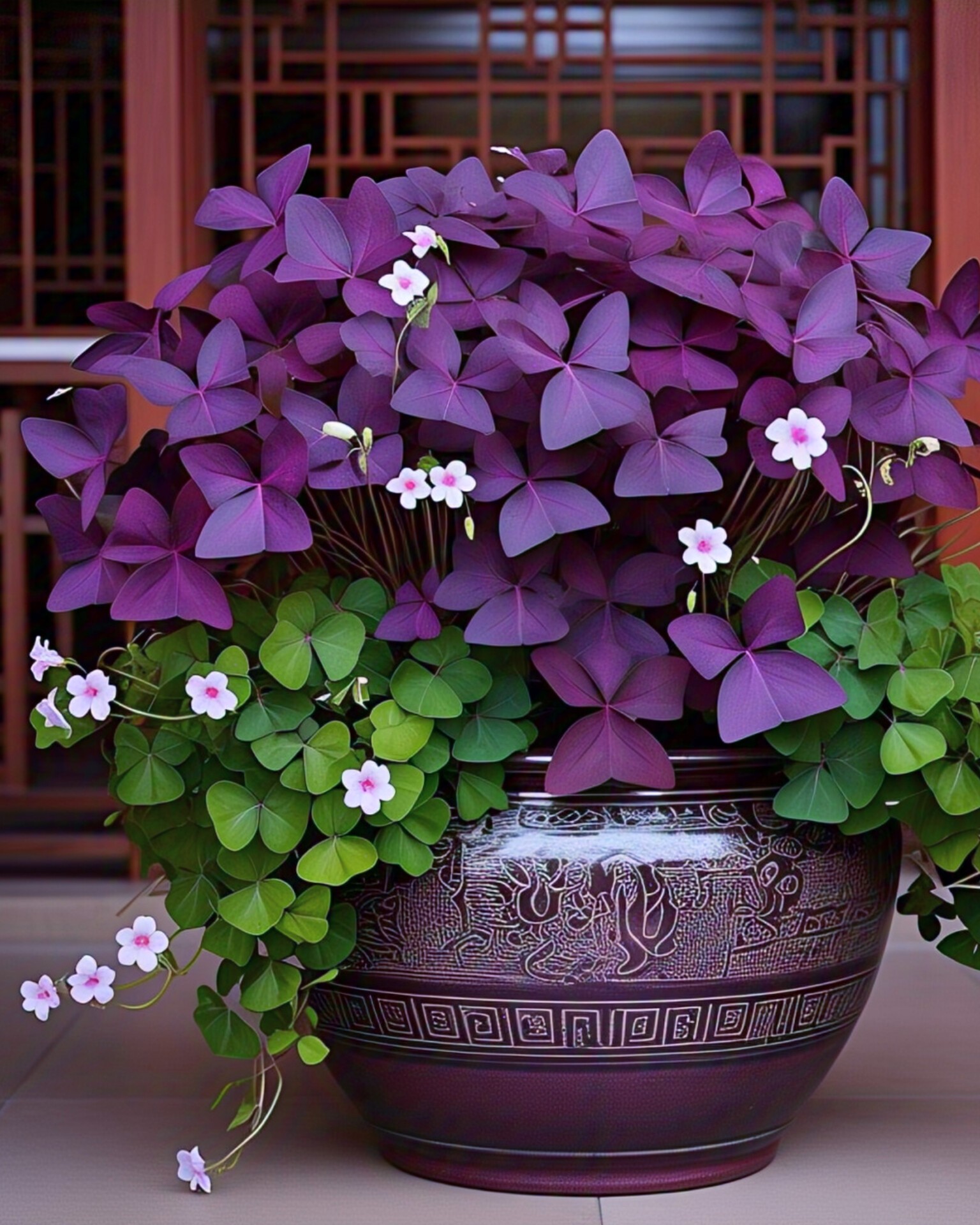The Oxalis triangularis, commonly known as the shamrock plant or purple oxalis, is a striking perennial herb that captivates both novice and seasoned plant enthusiasts alike. Characterized by its distinctive trifoliate leaves that resemble a shamrock, this plant showcases an enchanting deep purple hue that can transform any indoor space into a vibrant oasis. Native to South America, particularly Brazil, it thrives in warm climates but adapts well to indoor environments, making it a popular choice for home decor.
Botanical Classification
The Oxalis triangularis belongs to the Oxalidaceae family, a diverse group of plants known for their unique leaf structures and vibrant colors. Botanically, the Oxalis genus encompasses over 800 species, many of which are recognized for their ornamental appeal and cultural significance. The triangularis variety stands out within this vast family, with its distinctive three-lobed leaves and captivating purple pigmentation.
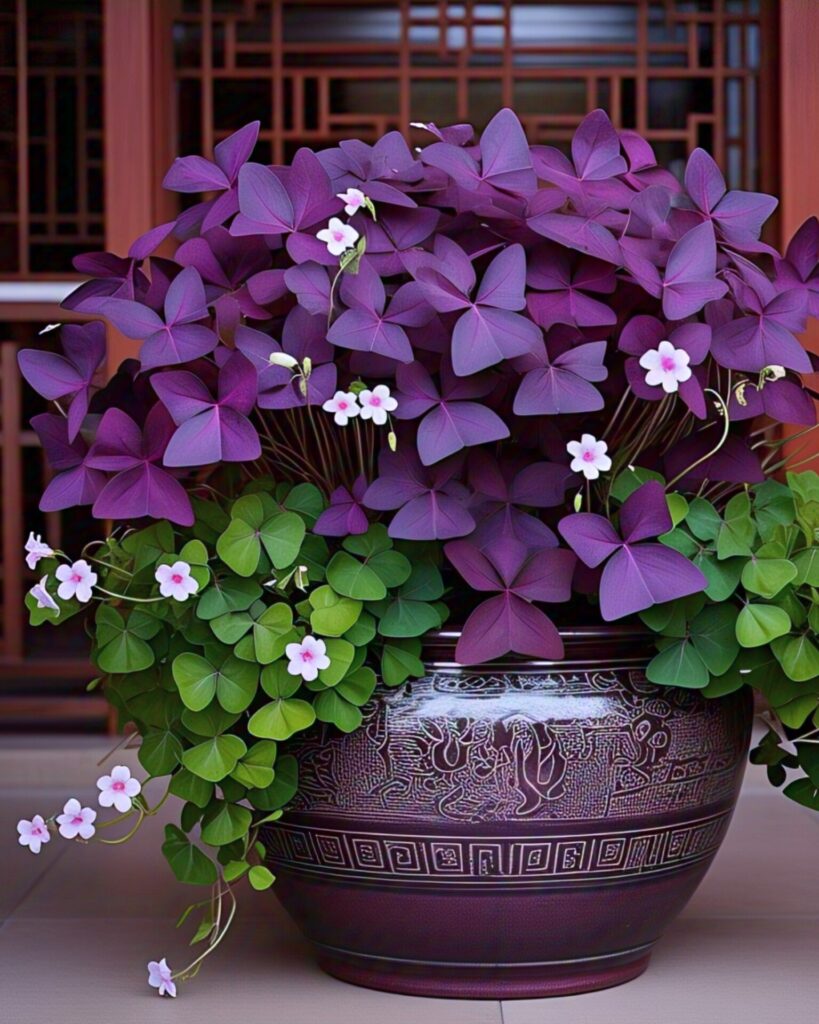
Leaf Structure and Phototropism
One of the most striking features of the Oxalis triangularis is its trifoliate leaves, which resemble the iconic shamrock shape. These leaves are not only visually appealing but also exhibit a remarkable behavior known as phototropism. Phototropism is the ability of plants to orient their leaves and stems in response to the direction of light, a process that plays a crucial role in the plant’s ability to capture sunlight for photosynthesis.
As the leaves of the Oxalis triangularis open and close in response to changes in light intensity, they create a mesmerizing display that captivates observers. This dynamic behavior is often described as the plant “sleeping” at night or during overcast days, as the leaves fold inward to conserve energy. Conversely, when exposed to bright sunlight, the leaves unfurl and spread out, maximizing their surface area for optimal photosynthesis.
Floral Attributes
In addition to its captivating foliage, the Oxalis triangularis also produces delicate white or pink flowers that emerge in clusters above the plant’s lush greenery. These small, five-petaled blooms add yet another layer of visual interest to the plant, further enhancing its allure. The flowers typically bloom during the warmer months, providing a seasonal show of elegance and charm.
Geographic Distribution
The Oxalis triangularis is native to South America, particularly the tropical regions of Brazil. In its native habitat, the plant thrives in warm, humid environments, where it can be found growing in moist, well-drained soils. Over time, the species has gained popularity as an ornamental plant, and it is now cultivated and enjoyed in various parts of the world, including Europe, North America, and Asia.
Adaptability to Indoor Environments
One of the reasons for the Oxalis triangularis’ widespread appeal is its ability to adapt to indoor environments. Unlike many other tropical plants that require specific environmental conditions, the Oxalis triangularis is relatively easy to care for and can thrive in a variety of household settings. This makes it an excellent choice for apartment dwellers, office spaces, and indoor gardens, where it can bring a touch of vibrant, natural beauty to otherwise drab surroundings.
Cultivation Preferences
While the Oxalis triangularis is adaptable, it does have specific cultivation requirements to ensure its optimal growth and health. The plant prefers well-draining soil and indirect, bright light, which can be achieved through strategic placement near windows or under appropriate lighting. Proper watering is also essential, as the plant is susceptible to root rot if the soil is kept too moist. With the right care and attention, the Oxalis triangularis can thrive and showcase its enchanting foliage and delicate flowers.
Cultural Significance and Symbolism
The cultural context surrounding the Oxalis triangularis, or “shamrock plant,” cannot be overlooked. Historically, the shamrock has been strongly associated with good fortune and luck, particularly in Celtic traditions. This connection has led to the plant’s widespread use in the celebration of St. Patrick’s Day, where it is often used to represent the holy trinity.
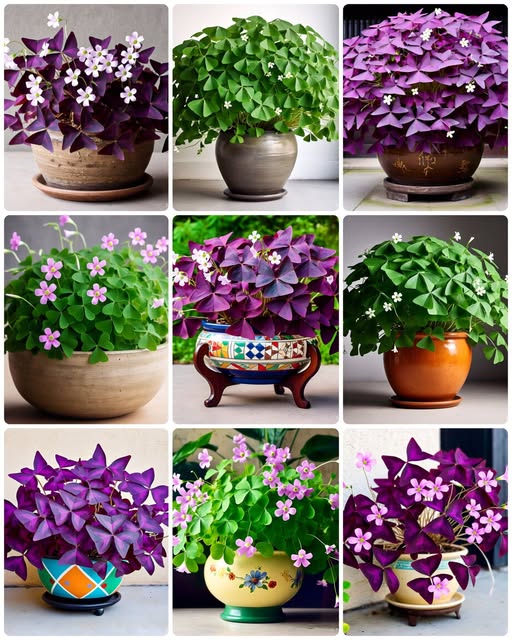
Associations with Luck and Renewal
The Oxalis triangularis’ shamrock-like foliage has imbued the plant with a sense of mysticism and symbolism throughout history. In many cultures, the trifoliate leaves are seen as a representation of luck, renewal, and the interconnectedness of all things. This belief has led to the plant being revered as a good-luck charm, with some individuals even cultivating their own “green talisman” to bring prosperity and positive energy into their homes.
Role in Celtic Traditions
The Oxalis triangularis’ association with the shamrock is particularly prominent in Celtic traditions, where the three-lobed leaf is seen as a representation of the holy trinity. In Ireland, the shamrock has become an iconic symbol, frequently used in the celebrations of St. Patrick’s Day. This cultural significance raises intriguing questions about our relationship with nature and the ways in which we imbue plants with deeper, symbolic meanings.
Modern Interpretations of Symbolism
In the modern era, the cultural significance of the Oxalis triangularis continues to evolve. As more people incorporate indoor plants into their homes and workspaces, the shamrock plant has become a symbol of mindfulness, responsibility, and a connection to the natural world. By nurturing these plants, individuals can foster a sense of empathy and an appreciation for the delicate balance that exists between living organisms and their environment.
Care and Cultivation Insights
Caring for the Oxalis triangularis provides valuable insights into the symbiotic relationship between humans and plants. Understanding the specific needs and preferences of this plant can serve as a microcosm for broader horticulture practices, highlighting the importance of attentiveness and adaptability in successful plant cultivation.
Optimal Growing Conditions
The Oxalis triangularis thrives best in indirect, bright sunlight and well-draining soil. Exposure to direct sunlight can lead to scorching of the leaves, while too much shade may inhibit its growth and vibrant coloration. Maintaining the right balance of light and moisture is crucial for the plant’s health and longevity.
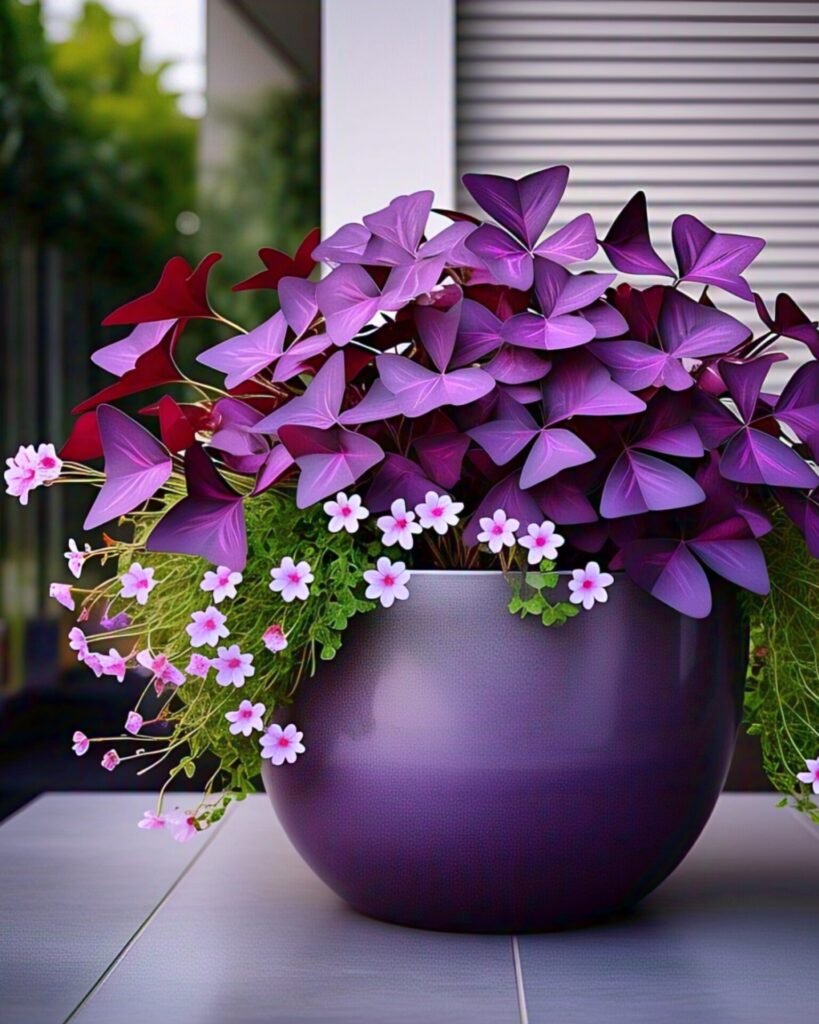
Watering and Soil Requirements
When it comes to watering, the Oxalis triangularis requires a delicate touch. Overwatering can lead to bulb rot, while allowing the soil to become too dry can stress the plant and cause it to wilt. The ideal watering schedule often involves allowing the soil to partially dry out between waterings, ensuring that the plant’s needs are met without becoming waterlogged.
Common Pests and Diseases
Like any living organism, the Oxalis triangularis is susceptible to various pests and diseases. Aphids, mealybugs, and spider mites are common culprits that can threaten the plant’s well-being. Additionally, issues such as root rot, leaf spot, and fungal infections can arise if the growing conditions are not properly maintained. Vigilance and early intervention are key to addressing these challenges and keeping the Oxalis triangularis healthy and thriving.
Seasonal Changes in Oxalis Triangularis
The Oxalis triangularis experiences distinct seasonal changes that contribute to its captivating and dynamic nature. Understanding the plant’s growth cycles and dormancy periods can provide valuable insights into its adaptability and resilience.
Growth Cycles
During the warmer, brighter months, the Oxalis triangularis typically experiences a burst of growth, with its trifoliate leaves unfolding and its delicate flowers blooming in vibrant displays. As the seasons change and the days grow shorter, the plant may enter a dormant phase, where its foliage begins to wilt and the bulbs go into a resting state.
Dormancy Periods
The Oxalis triangularis’ ability to go dormant during the colder or less favorable months is a remarkable adaptation that allows the plant to conserve energy and protect itself from environmental stressors. During this period, the plant may appear to be “sleeping,” with its leaves folding inward and the overall growth slowing down. This cyclical behavior is a testament to the plant’s resilience and the intricate ways in which it interacts with its surroundings.
Cultivating Mindfulness
Observing the seasonal changes in the Oxalis triangularis can foster a sense of mindfulness and appreciation for the natural rhythms of life. As the plant’s leaves open and close in response to light, it invites us to reflect on our own patterns of growth, rest, and renewal, encouraging a deeper understanding of the interconnectedness of all living things.
Environmental Considerations
In the age of climate change and growing environmental awareness, the cultivation of plants such as the Oxalis triangularis presents an opportunity to reflect on our collective responsibility toward the natural world.
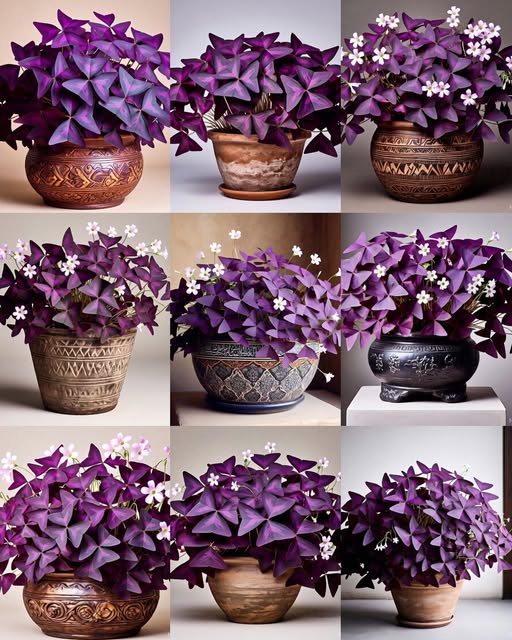
Indoor Plant Benefits
The trend of bringing greenery indoors aligns with the increasing recognition of the benefits that plants can provide in urban settings. Oxalis triangularis, and other houseplants, can contribute to improved air quality, enhance psychological well-being, and foster a sense of connection to the natural environment, even in the midst of concrete and steel.
Sustainable Sourcing Practices
However, the rise in popularity of indoor plants also raises questions about the sustainability and ethical sourcing of these species. As enthusiasts and plant lovers, there is a responsibility to consider the environmental impact of the cultivation and distribution of the Oxalis triangularis and other ornamental plants. Advocating for eco-friendly practices, such as local or small-scale production, can help promote a more sustainable horticultural industry.
Climate Change Impacts
Furthermore, the adaptability of the Oxalis triangularis to various indoor environments raises intriguing questions about the potential impacts of climate change on plant species. As global temperatures continue to rise and weather patterns become more erratic, the ability of certain plants to thrive in non-native habitats may become increasingly valuable. Studying the resilience and versatility of the Oxalis triangularis can provide insights into the future of plant-human interactions and the role of horticulture in climate change mitigation.
The Relationship Between Humans and Plants
The Oxalis triangularis serves as a powerful reminder of the intricate and multifaceted relationship between humans and the natural world. By engaging with this captivating plant, individuals can gain valuable insights into the importance of empathy, responsibility, and mindfulness in their interactions with living organisms.
Lessons in Empathy and Responsibility
Caring for the Oxalis triangularis requires a delicate balance of attentiveness and patience. Just as the plant thrives under the right environmental conditions, so too do relationships and personal aspirations require nurturing and care. By cultivating the Oxalis triangularis, individuals can learn valuable lessons in empathy, understanding the needs of another living being and responding accordingly.
Mindfulness through Gardening
Additionally, the dynamic behavior of the Oxalis triangularis, with its leaves opening and closing in response to light, can foster a sense of mindfulness and connection to the natural world. The act of observing and tending to these plants can encourage a slower, more deliberate pace of life, inviting individuals to be present and attuned to the rhythms of the living organisms around them.
Creative Uses of Oxalis Triangularis in Home Decor
The Oxalis triangularis, with its striking foliage and delicate flowers, lends itself well to a variety of creative applications in home decor and indoor gardening.
Complementary Plant Pairings
When incorporating the Oxalis triangularis into a home environment, it can be beneficial to consider pairing it with other plants that complement its unique characteristics. For instance, the plant’s deep purple hues may contrast beautifully with the vibrant greens of succulents or the soft, neutral tones of air plants, creating a visually striking and harmonious display.
Arrangements and Displays
The Oxalis triangularis can be showcased in a variety of arrangements, from individual potted specimens to cascading hanging baskets or terrariums. Its adaptability allows it to be integrated seamlessly into different interior design styles, from minimalist Scandinavian-inspired settings to lush, jungle-inspired oases. Creative placement and framing can further accentuate the plant’s enchanting features, transforming any space into a botanical haven.
Oxalis Triangularis in Folklore and Mythology
The Oxalis triangularis, or shamrock plant, has been imbued with a rich tapestry of folklore and mythological associations across various cultures and traditions.
Stories Across Cultures
From the Celtic traditions of Ireland to the indigenous beliefs of South America, the Oxalis triangularis has been woven into the cultural narratives of many regions. These stories often revolve around the plant’s connection to luck, renewal, and the sacred, reflecting the deep-rooted reverence and symbolism that has been attached to this captivating species.
Plant Legends and Their Origins
Exploring the origins and evolution of these plant-based legends can provide valuable insights into the ways in which humans have sought to find meaning and significance in the natural world. The enduring appeal of the Oxalis triangularis, and its ability to transcend geographical and cultural boundaries, speaks to the universal human need to imbue the living world with deeper, symbolic resonance.
Health Benefits of Oxalis Triangularis
In addition to its aesthetic appeal and cultural significance, the Oxalis triangularis also offers potential health benefits that are worth considering.
Air Purification Qualities
As with many indoor plants, the Oxalis triangularis has been found to possess air-purifying properties, helping to remove certain toxins and pollutants from the surrounding environment. This attribute aligns with the growing awareness of the importance of indoor greenery in promoting healthier living spaces, particularly in urban areas.
Psychological Well-Being
Beyond its physical benefits, the Oxalis triangularis may also contribute to psychological well-being. The act of caring for and observing the plant’s dynamic behavior can foster a sense of calm and connection to the natural world, which has been shown to have positive effects on mental health and overall mindfulness.
Challenges of Growing Oxalis Triangularis
While the Oxalis triangularis is generally considered an adaptable and resilient plant, it is not without its challenges when it comes to cultivation and care.
Environmental Stress Factors
One of the primary challenges in growing the Oxalis triangularis is maintaining the appropriate environmental conditions. Fluctuations in temperature, humidity, and light exposure can all impact the plant’s health and growth, leading to potential issues such as leaf discoloration, stunted growth, or even dormancy.
Common Mistakes to Avoid
Additionally, improper watering and soil management can pose significant risks to the Oxalis triangularis. Overwatering can lead to root rot, while allowing the soil to become too dry can cause the plant to wilt and become stressed. Diligence and a keen understanding of the plant’s needs are essential for successfully cultivating a thriving Oxalis triangularis.
Propagation Techniques for Oxalis Triangularis
For those interested in expanding their Oxalis triangularis collection or sharing the joy of this captivating plant with others, understanding the various propagation techniques can be invaluable.
Bulb Division Methods
One of the most common methods of propagating the Oxalis triangularis is through the division of its bulbs. By carefully separating the plant’s underground storage organs, gardeners can create new, independent plants that can be transplanted and nurtured.
Seed Germination Tips
In addition to bulb division, the Oxalis triangularis can also be propagated through seed germination. While this process may be slightly more challenging and time-consuming, it can be a rewarding way to introduce new genetic diversity into one’s collection and experiment with the plant’s growth and development.
The Future of Oxalis Triangularis in Horticulture
As the popularity of indoor gardening and the appreciation for natural environments continue to grow, the Oxalis triangularis and other captivating plant species may play an increasingly significant role in the future of horticulture.
Trends in Urban Gardening
The Oxalis triangularis’ adaptability to indoor settings and its air-purifying qualities make it well-suited for the emerging trend of urban gardening. As more people seek to bring the restorative power of nature into their homes and workplaces, the demand for versatile and visually striking houseplants like the Oxalis triangularis is likely to increase.
Potential Innovations in Cultivation
Additionally, as research and technological advancements continue to shape the horticultural industry, new opportunities may arise for the cultivation and propagation of the Oxalis triangularis. From the development of specialized growing media to the exploration of novel propagation techniques, the future of this captivating plant may hold even more surprises and delights for enthusiasts and green-thumbed individuals alike.
Conclusion
The Oxalis triangularis, or shamrock plant, is a truly remarkable and enigmatic specimen that captivates the senses and invites deeper reflection on our relationship with the natural world. From its distinctive trifoliate leaves and captivating phototropic behavior to its rich cultural symbolism and potential health benefits, this plant offers a multifaceted experience that transcends its role as a mere decorative element.
By cultivating and engaging with the Oxalis triangularis, individuals can foster a sense of empathy, responsibility, and mindfulness – qualities that extend far beyond the realm of horticulture and into the tapestry of human experience. As we navigate the challenges of climate change and the growing need for sustainable living practices, the Oxalis triangularis and other indoor
